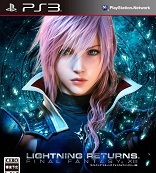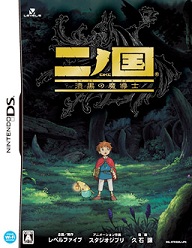Atelier Rorona: The Alchemist of Arland
PlayStation 3
Reviewed: 11/25/2010

Rorolina Frixell, called Rorona for short, is essentially an indentured servant of Astrid, the town’s alchemist. Astrid doesn’t seem to do anything to justify her shop’s existence, refusing to do any work and often taking long naps or leaving the workshop for no reason. Her shop is on valuable property, and a regent of the palace covets it, somehow believing that he can fit several profitable factories on the tiny plot of land. He sends orders to the shop through Sterkenberg, a local knight. The message is simple: fulfill requests from the palace, or the shop will be closed and Astrid and Rorona will be evicted. Astrid promptly turns the workshop over to the inexperienced Rorona, making it her responsibility to save the workshop.
The main story, full of plot holes and goofiness, is a only a frame to keep the game moving, but it gets the job done. The main story alone is on the dull side, but the game’s mechanics are interesting enough that adding more story scenes would have intruded on the game anyway. Where Atelier Rorona‘s story succeeds is in the dozens of micro-scenes scattered throughout the game. As Rorona spends time to gain the trust of the townspeople and creating things with alchemy, different scenes will unlock: some important, some funny, some that are just interesting. Additionally, neglecting characters also has effects on the game, which is a great touch. Characters will throw fits, fail to help Rorona, or even leave town altogether if friendships aren’t maintained.
 |
The most baffling part of the story is how the script was rated Teen. Rorona herself is a whopping 14 years old, and it seems like most adult characters in the town are obsessed with her, lusting over her, want to get her drunk, or want play dress-up with her. It can be downright awkward. Astrid is the worst offender, filling her dialogue boxes with innuendo and lusty turns of phrase, with a breathy voice actress to match. Phrases such as “Please tear my clothes off!” are met with glee from Astrid, and that’s among the more tame examples.
Rorona has three years of game time to finish twelve assignments from the palace. An ever-present calendar shows what day it is and how many days remain before the end of the assignment. Most assignments involve creating certain items through alchemy, and Rorona’s evaluations for such are based on the quantity and quality of items turned in. Failing to complete an assignment will result in game-over, though the game provides the player with ample in-character warnings. Additionally, the townspeople will have individual requests that can be done to receive money and popularity, and individual characters and store owners have friendship levels that can be raised by completing requests. In the time available to finish the assignment, the player must manage time to balance which quests to complete, how many days to spend on alchemy, and how many days to take to leave the town and enter dungeons to scavenge for ingredients. Time management amid all this is quite entertaining, and the play is set up in such a way that it’s easy to find oneself addicted.
The alchemy system is very well-paced. It’s fun to plan out how to allocate time, and most assignments are easy to complete with time to spare. As long as the player is smart about using time, there will be plenty of time left over for pressure-free playing around with the excellent alchemy system, or for some extra dungeon-crawling.
Alchemy and gathering systems are the highlights of Atelier Rorona, providing plenty of fun for people who love to play around.
Once Rorona learns an alchemy recipe, either through a book or by mastering other recipes, it will appear as an option in her alchemy Cauldron menu. Each recipe has an alchemy level, time, base price, ingredient list, and potential effects attached to it. The alchemy level, relative to Rorona’s alchemy level, determines the success rate of a given recipe. Effects of produced items, which range from “Fire Damage L” to “HP Restore XS” to “Salty,” are initially unknown, but once an item with those effects has been produced, it is possible to
see which ingredients will create that effect in that recipe, encouraging players to attempt the same recipes again to mix and match effects or discover new ones. Certain types of ingredients and levels of quality of those ingredients can alter effects.
 |
Alchemy requires ingredients, and there is no shortage of them in Atelier Rorona. Nearly anything picked up in a dungeon can be used as or broken down into an alchemy ingredient. Each ingredient has a quality rating from 0-100, classifications (such as “Food” or “Thread”), and traits.
Traits are possibly the most arcane and irritating part of alchemy. There are lots of traits, but no easy interface to discover what they actually do. The names are not always self-explanatory, such as “Judgment +3.” To find out what a trait does, it has to first be discovered in an ingredient, and then can be found in the game’s encyclopedia, which is inconvenient to access while actually in the process of alchemy. Many of the traits are basically useless, while others are very, very valuable, so the lack of easy-to-reference information is frustrating.
Atelier Rorona‘s graphics are colorful and clean, but they aren’t fantastic. It’s not that there are problems with the graphics, but the visual style has no defining feature to make it truly memorable. The usual Gust art style is a nice break from the multitude of CG-heavy titles of the generation, though. The only real gripe with the graphics lies in the interface. Considering how much time is spent in the menus, they look poor; this detracts from their functionality. Character status menus look like stacks of information, and aren’t organized in a way that makes them easy to scan. The font sizes are atrocious for an HDTV, and make it difficult to read menus like the Container without leaning forward or squinting. The whole menu could have been larger without disrupting either the interface or the character portraits, which feel like they were given more importance than the actual menu content.
Atelier Rorona‘s music flip-flops between tracks that are irritating or boring, and good tracks that are heard too often to hold up under the repetition. There are also one or two good pieces in the game that are heard infrequently. Often the problem is that with all the rapid menu and location switching, the player will only hear the opening bars of a tune before switching to a different location, only to again leave
after hearing those few notes. The workshop, town and palace themes are the worst offenders here.
Where the interface is concerned, it seems that for every excellent design decision on the part of the developers comes one awful one. Among the strokes of genius in the game are the icons above each quest that let the player know whether the quest items are known and currently in Rorona’s possession or not, the “Report Right Away” button for said quests, and the option to put every item gathered from a dungeon in the Alchemy container all at once. Among the bad design choices is the absence of a “select all” button in the inventory on any occasion. Want to move your 78 cabbages from the basket to the container? Get ready to press the D-pad and X button 78 times each. RPGs have had interface fixes preventing that for decades, so in this era, there’s no excuse for that. The equipment selection screen, the super tiny menu fonts, and the inability to compare two items at once start out as minor annoyances that only get bigger over time.
Because the alchemy system is a lot of fun, and ingredient gathering can be very compelling, it’s frustrating that the battle system in Atelier Rorona feels like an afterthought. The pacing is absolutely abysmal. Battles start out far too easy. It takes over half the game for battles to even reach a normal level of difficulty, and longer for them to get difficult enough to be interesting, which makes every single battle feel like an interruption of the fun part of the game.
 |
Once the battles stop being irritating and start being fun, the battle system is easier to appreciate. It’s a simplistic, turn-based system with a few twists that make long battles more strategic. There is no such thing as MP. Instead, characters only have HP, and skills cost HP. This means that using skills can become dangerous in a difficult battle, especially as skill costs rise. Rorona herself is the only character who can use items, whether healing or attack items, and keeping her alive is an important part of surviving difficult battles. The two ally characters have cool Assist Gauges that fill as turns pass, and at any time a piece of the Assist Gauge can be used to either attack after Rorona, or to take hits for her. Altogether, while battles can be fun later in the game, battles are never a key part of the fun of Atelier Rorona, and earlier in the game they merely waste time.
Assuming that the player wants to keep playing Atelier Rorona after the initial three years are up, there’s a lot to discover in subsequent plays. There are four different kinds of endings, and each side character also has a special ending scene that can be unlocked under special conditions.
Atelier Rorona is great fun for a casual gamer, thanks to its lighthearted atmosphere, humorous character interactions, and extremely easy battle system. The time management and alchemy systems are sure to entertain almost anyone, including even the most seasoned, serious RPG nerd. But as time goes on, small problems and odd inefficiencies that were acceptable in the early going tend to get bigger and bigger right along with Rorona’s item basket.
-Janelle Hindman
| Score Breakdown | ||
| Overall Average Out of 10 See our Review Criteria |
Gameplay | Good |
| Story | Below Average | |
| Graphics | Average | |
| Sound/Music | Below Average | |
| Replay Value | Good | |
| The Verdict: Average | ||








